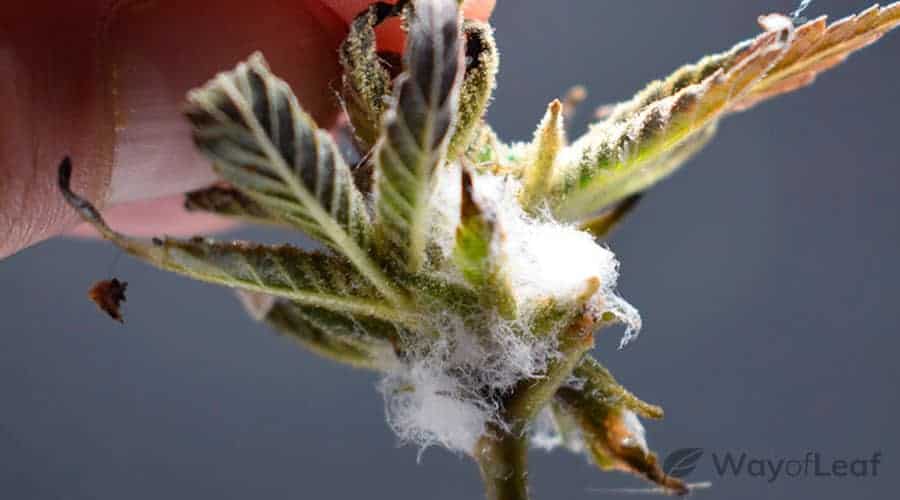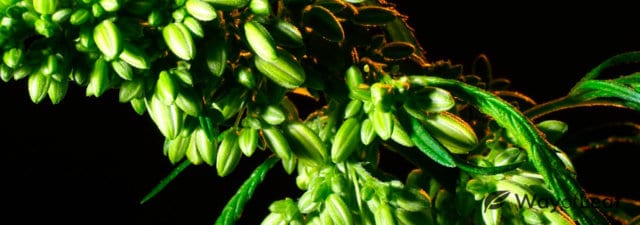If you notice mushrooms growing around your cannabis, your first reaction might be confusion or panic. After all, when you’ve put weeks of effort into cultivating your plants, you’ll want to keep them healthy and safe.
However, mushrooms in your cannabis garden are usually no cause for concern. In fact, they could even provide some benefits to your plants.
Read on to learn more about marijuana and mushrooms and how they can work together for optimal yields.
Mushrooms and Other Fungi: A Curious Kingdom
Fungi are fascinating things. They appear similar to plants in that they grow in soil and do not have nervous systems or muscles. However, in evolutionary terms, they are more similar to animals!
There are countless different species of fungi; some are simple, single-celled organisms, and others are far more complex.
Fungal cells tend to grow in strands known as hyphae. These hyphae are incredibly narrow and can penetrate the soil, wood, roots, and even rock. And although they are slim, some hyphae can be yards long.
DID YOU KNOW? The largest living organism in the world is a fungus called Armillaria. It is located in Oregon and covers over 2000 acres of land!
Among the most recognizable forms of fungi is the mushroom. However, mushrooms are just one part of a larger organism.
The bulk of the fungus, known as the mycelium, grows underground or in another medium, such as wood. When it is mature, it produces mushrooms. They are the ‘fruiting body’ of the fungus and help it reproduce by releasing tiny spores.
These spores travel on the wind or hitch a lift on animal fur to colonize a new area. That area could be your cannabis garden!
Why Mushrooms Grow Around Cannabis Plants
When mushrooms release their spores, they must find a suitable environment in which to settle and grow. Fungi love cool, moist conditions without too much sunlight. The soil underneath your cannabis plants is ideal, especially if your growing area isn’t too warm.
If you are cultivating marijuana outdoors, it is easy for spores to find their way to the surrounding earth. However, even indoor gardeners could find mushrooms growing around their cannabis plants.
Spores could easily enter the vicinity through an open window attached to your clothing or a pet’s fur. Therefore, mushrooms growing alongside marijuana is more common than you might think.
Are Mushrooms Growing Around Cannabis Plants Good or Bad?
It’s understandable if the sight of mushrooms in your cannabis garden unsettles you. However, in most cases, there is no need to worry. The majority of fungal species are harmless and may even offer some benefits to your weed.
Let’s take a look at why mushrooms around your cannabis could be a bonus and when they are cause for concern.
The Benefits of Fungus in Cannabis Growing
Fungi can offer advantages to many different types of plants, including cannabis. This is because they form a mutualistic symbiotic relationship.
This relationship benefits both plants and fungi. Fungi have no chlorophyll and are unable to photosynthesize in the same way that plants do. Therefore, they must get their nutrients in another way.
Their solution is to bind to the roots of plants and feed off the carbohydrates and amino acids that they produce. In return, they improve the plant’s ability to take up water and nutrientsfrom the soil. It’s a win-win situation.
Furthermore, fungi can help to suppress soil diseases and increase plants’ resilience to harsh conditions like droughts.
Marijuana cultivators are now beginning to take advantage of this partnership to enhance the health of their crops. Many people intentionally introduce a specific type of fungus known as mycorrhizae to their gardens.
Mycorrhizae naturally improve the health of cannabis plants and could even increase their overall yield. They also reduce susceptibility to pests and environmental stressors. You can purchase commercial mycorrhizal supplements and add them to your soil to benefit from them.
However, although mushrooms in your marijuana patch are generally desirable, there are also some drawbacks to consider.
The Disadvantages of Fungus in Cannabis Gardens
The problem with mushrooms is that some of them can be dangerous. While many species are edible, others can cause extreme sickness, hallucinations, and even death. And, unless you are an expert, you are unlikely to know which is which.
If you have pets or children, there is a chance that they could accidentally consume a poisonous mushroom and become ill. Although responsible growers will be keeping their cannabis plants in a secure area anyway, sometimes unpredictable circumstances can occur.
Therefore, it may be wise to remove any mushrooms that grow around your cannabis. However, the mycelium will still be active, so there’s a chance they could return. You will need to keep a close eye on your soil and remove any new mushrooms as they appear.
Additionally, there is one type of fungus that you will definitely want to keep away from your marijuana: Mold.
Mold can infect cannabis roots and buds, affecting the health of the plant and rendering it unusable. One of the worst things about this fungus is its tendency to strike just before harvest time, ruining weeks of hard work.
So, what are the signs of mold, and how can you avoid it?
Recognizing and Preventing Mold on Cannabis
Many different types of mold can grow on cannabis. One of the most common is called Botrytis, also known as bud rot.
Botrytis infects cannabis buds and causes them to rot from the inside out. Therefore, by the time you notice it, it is usually too late. Infected buds will look grayish-white and have a squashy or slimy texture. If you see these signs, remove the affected buds immediately and pray.

Bud rot is most likely to affect cannabis with dense buds. It’s one reason why it is essential to keep your plants well-trimmed to allow for proper air circulation. It is also crucial to monitor the temperature and humidity of your grow room. Like all fungus, mold thrives in cool, damp conditions.
Daytime temperatures should remain above 70°F, and at night, it should not fall below 55°F. Plants can withstand around 70% humidity during the vegetative stage, but you should reduce it significantly during flowering.
Other steps you can take to reduce the likelihood of bud rot occurring include:
- Do not overwater plants: Allow them to dry out thoroughly between waterings, especially as they approach the flowering stage.
- Maintain a high level of cleanliness: This includes your grow room, any equipment you use, your clothing, and your hands.
- Inspect plants regularly and remove any infected buds immediately.
It is also vital to prevent mold during the drying and curing stage. Hang buds far enough apart to allow for good air circulation while drying. Ideally, you should do this in a room with a temperature of 65–70°F and under 50% humidity.
For more on how to prevent and treat cannabis mold, check out our in-depth article on bud rot.
Mushrooms Growing Around Cannabis Plants: Final Thoughts
Overall, mushrooms in your cannabis garden are no bad thing. They are a sign that your soil is healthy and can provide numerous benefits for your plants. However, you may want to remove them for safety or cosmetic purposes.
That said, mold is one type of fungus you will undoubtedly want to avoid. It can strike right before harvest time and destroy your precious buds. Therefore, it is imperative that you carefully monitor your grow room conditions and look out for tell-tale signs.
Mushrooms growing around your marijuana could indicate that the area is too cold and damp. All fungi enjoy the same conditions, so if you find mushrooms, mold may not be far behind. Heed the warning and check that your temperature and humidity are within range, making adjustments if necessary.



![Growing Mediums – The Cheapest and Most Expensive [Rated]](https://wayofleaf.com/wp-content/uploads/2020/05/wol_growing_mediums-640x225.jpg)



![How to Make a Marijuana Grow Tent for Just $2… [Say WHAT!?]](https://wayofleaf.com/wp-content/uploads/2018/10/wol_how-to-make-a-marijuana-grow-tent-for-just-2-say-what-640x225.jpg)




